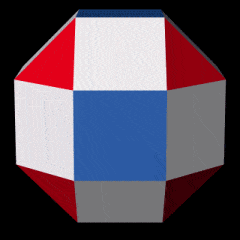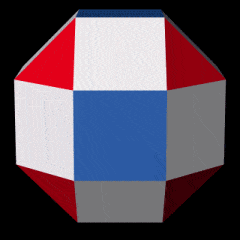
The scaffolded DNA origami technique has been extended to build complex, programmable wireframe structures exhibiting precise control of branching and curvature. A hat tip to KurzweilAI for reporting this Arizona State University Biodesign Institute news release “Rare form: novel structures built from DNA emerge“:
… Hao Yan, a researcher at Arizona State University’s Biodesign Institute, has worked for many years to refine [DNA origami]. His aim is to compose new sets of design rules, vastly expanding the range of nanoscale architectures generated by the method. In new research, a variety of innovative nanoforms are described, each displaying unprecedented design control. …
In the current study, complex nano-forms displaying arbitrary wireframe architectures have been created, using a new set of design rules. “Earlier design methods used strategies including parallel arrangement of DNA helices to approximate arbitrary shapes, but precise fine-tuning of DNA wireframe architectures that connect vertices in 3D space has required a new approach,” Yan says.
Yan has long been fascinated with Nature’s seemingly boundless capacity for design innovation. The new study describes wireframe structures of high complexity and programmability, fabricated through the precise control of branching and curvature, using novel organizational principles for the designs. (Wireframes are skeletal three-dimensional models represented purely through lines and vertices.)
The resulting nanoforms include symmetrical lattice arrays, quasicrystalline structures, curvilinear arrays, and a simple wire art sketch in the 100-nm scale, as well as 3D objects including a snub cube with 60 edges and 24 vertices and a reconfigurable Archimedean solid that can be controlled to make the unfolding and refolding transitions between 3D and 2D.
The research appears in the advanced online edition of the journal Nature Nanotechnology [abstract]. …
The new design rules were next tested with the assembly of increasingly complex nanostructures, involving vertices ranging from 2 to 10 arms, with many different angles and curvatures involved, including a complex pattern of birds and flowers.
The accuracy of the design was subsequently confirmed by AFM imaging, proving that the method could successfully yield highly sophisticated wireframe DNA nanostructures. …
The authors stress that the new design innovations described can be used to compose and construct any imaginable wireframe nanostructure— a significant advancement for the burgeoning field. On the horizon, nanoscale structures may one day be marshaled to hunt cancer cells in the body or act as robot assembly lines for the design of new drugs.
This new design approach has clearly produced a variety of intricate nanostructures. It will be interesting to see what new functional devices and nanomachines arise from this increased structural repertoire.
—James Lewis, PhD


